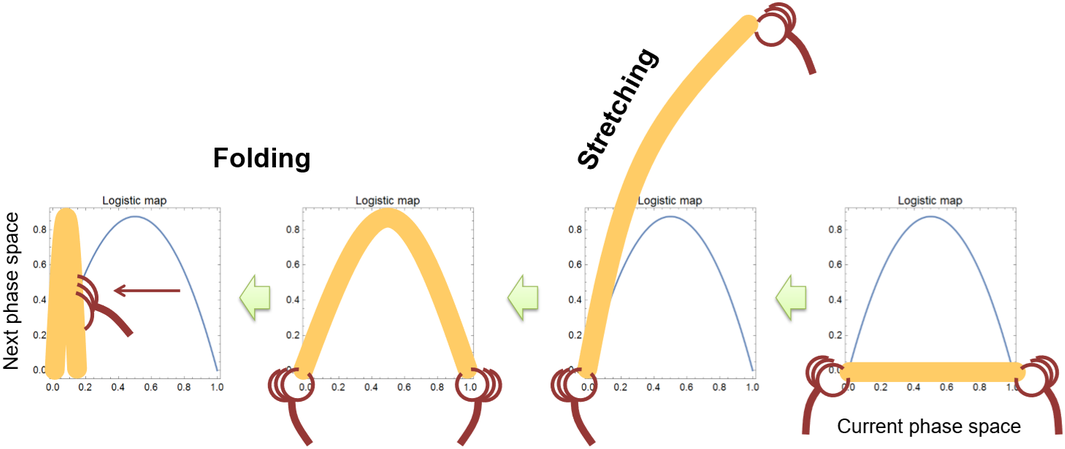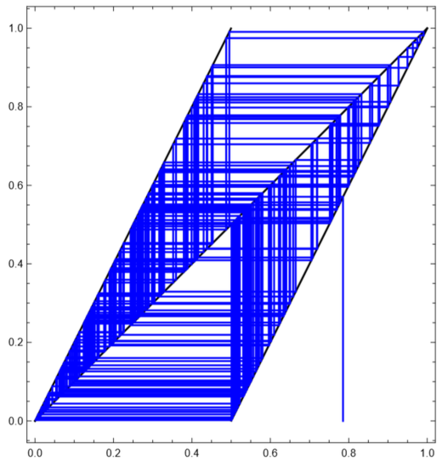9.2: Characteristics of Chaos
( \newcommand{\kernel}{\mathrm{null}\,}\)
It is helpful to realize that there are two dynamical processes always going on in any kind of chaotic systems: stretching and folding [33]. Any chaotic system has a dynamical mechanism to stretch, and then fold, its phase space, like kneading pastry dough (Figure \PageIndex{1}). Imagine that you are keeping track of the location of a specific grain of flour in the dough while a pastry chef kneads the dough for a long period of time. Stretching the dough magnifies the tiny differences in position at microscopic scales to a larger, visible one, while folding the dough always keeps its extension within a finite, confined size. Note that folding is the primary source of nonlinearity that makes long-term predictions so hard—if the chef were simply stretching the dough all the time (which would look more like making ramen), you would still have a pretty good idea about where your favorite grain of flour would be after the stretching was completed. This stretching-and-folding view allows us to make another interpretation of chaos:
Chaos can be understood as a dynamical process in which microscopic information hidden in the details of a system’s state is dug out and expanded to a macroscopically visible scale (stretching), while the macroscopic information visible in the current system’s state is continuously discarded (folding).

This kind of information flow-based explanation of chaos is quite helpful in understanding the essence of chaos from a multiscale perspective. This is particularly clear when you consider the saw map discussed in the previous exercise:
x_{t}= \text{fractional part of } 2x_{t-1} \label{9.1}
If you know binary notations of real numbers, it should be obvious that this iterative map is simply shifting the bit string in x always to the left, while forgetting the bits that came before the decimal point. And yet, such a simple arithmetic operation can still create chaos, if the initial condition is an irrational number (Figure \PageIndex{2})! This is because an irrational number contains an infinite length of digits and chaos continuously digs them out to produce a fluctuating behavior at a visible scale.

The saw map can also show chaos even from a rational initial condition, if its behavior is manually simulated by hand on a cobweb plot. Explain why.



http://beyondmicrofoundations.blogsp...2012-csss.html
https://elmer.unibas.ch/pendulum/lab.htm